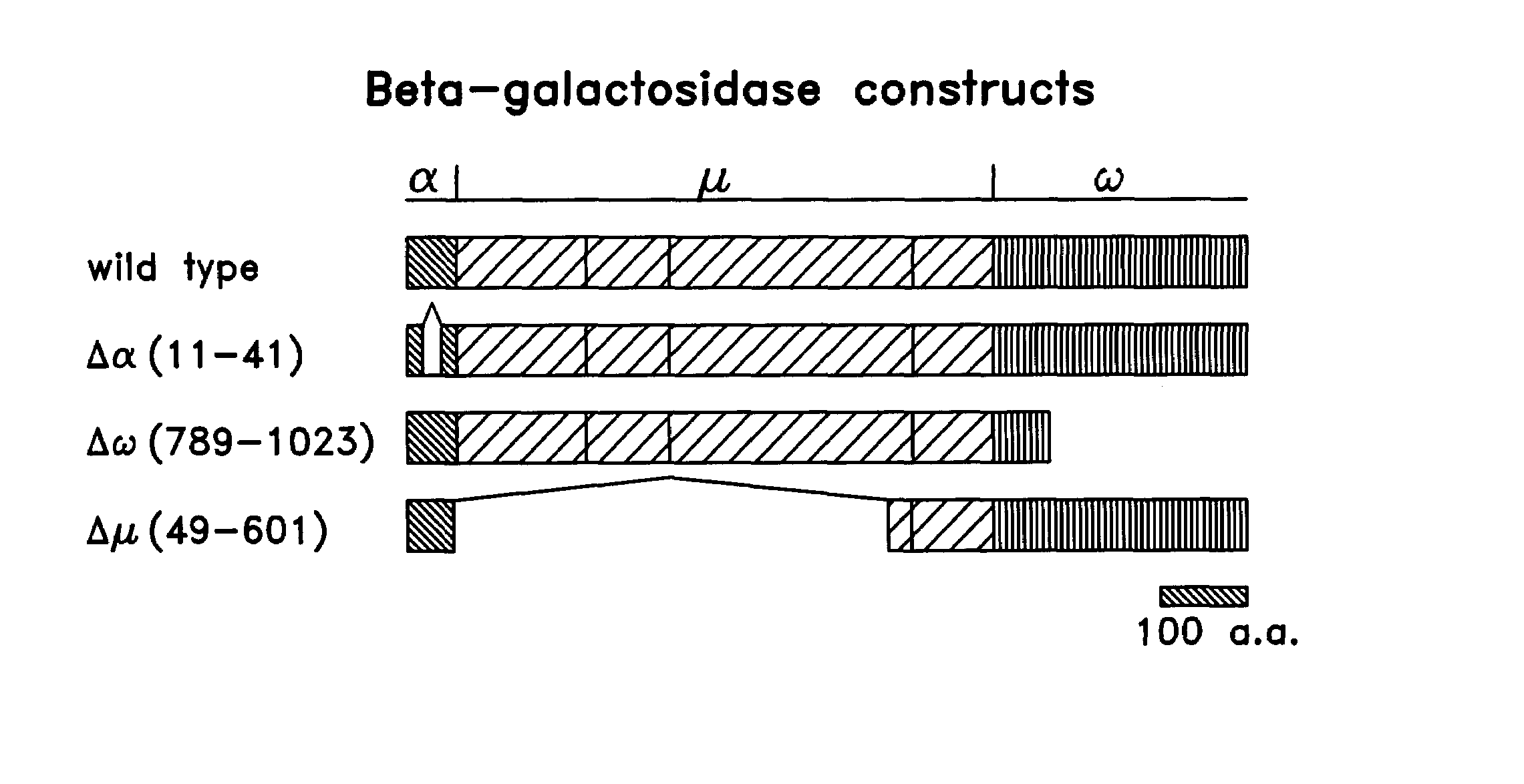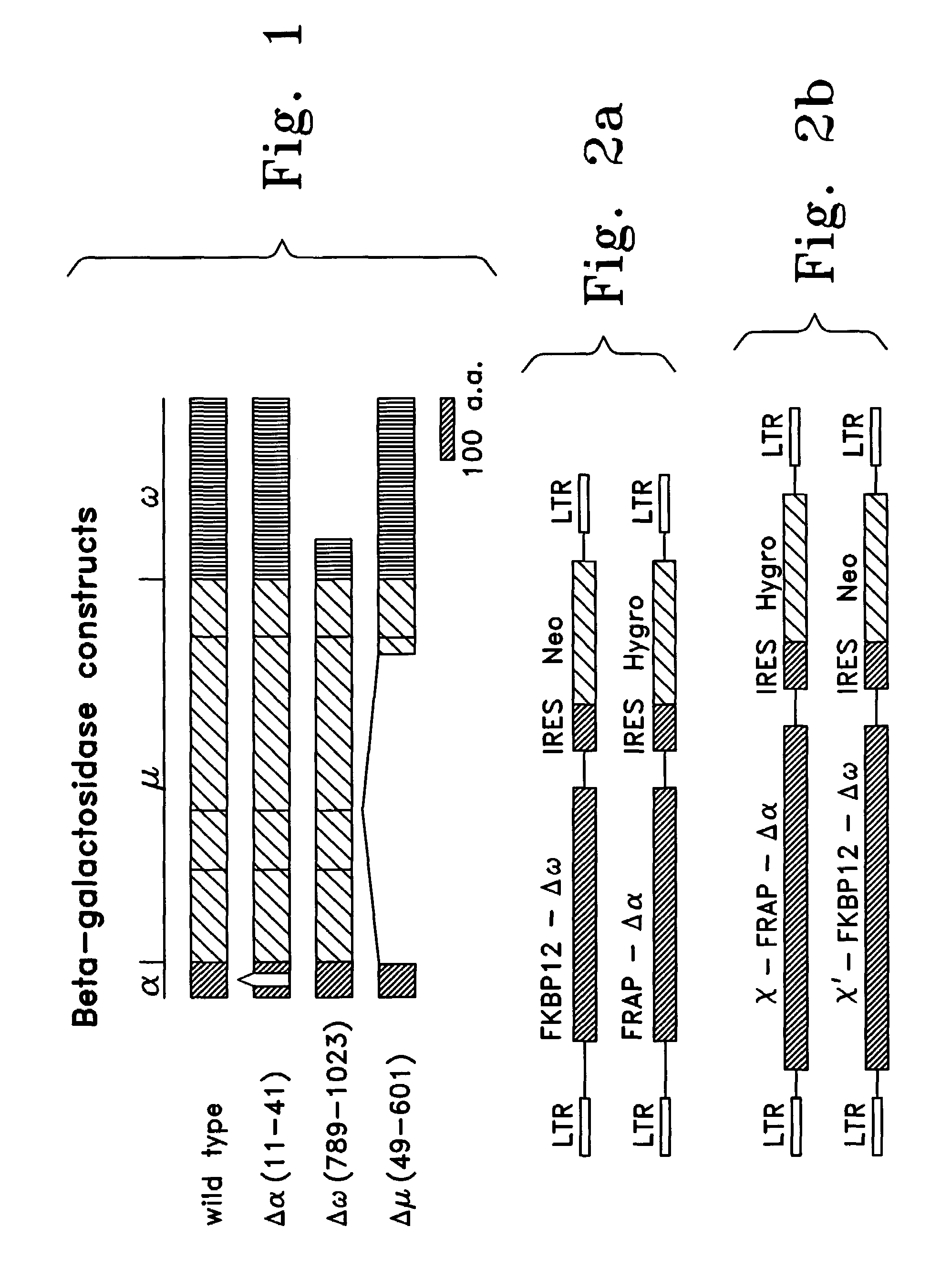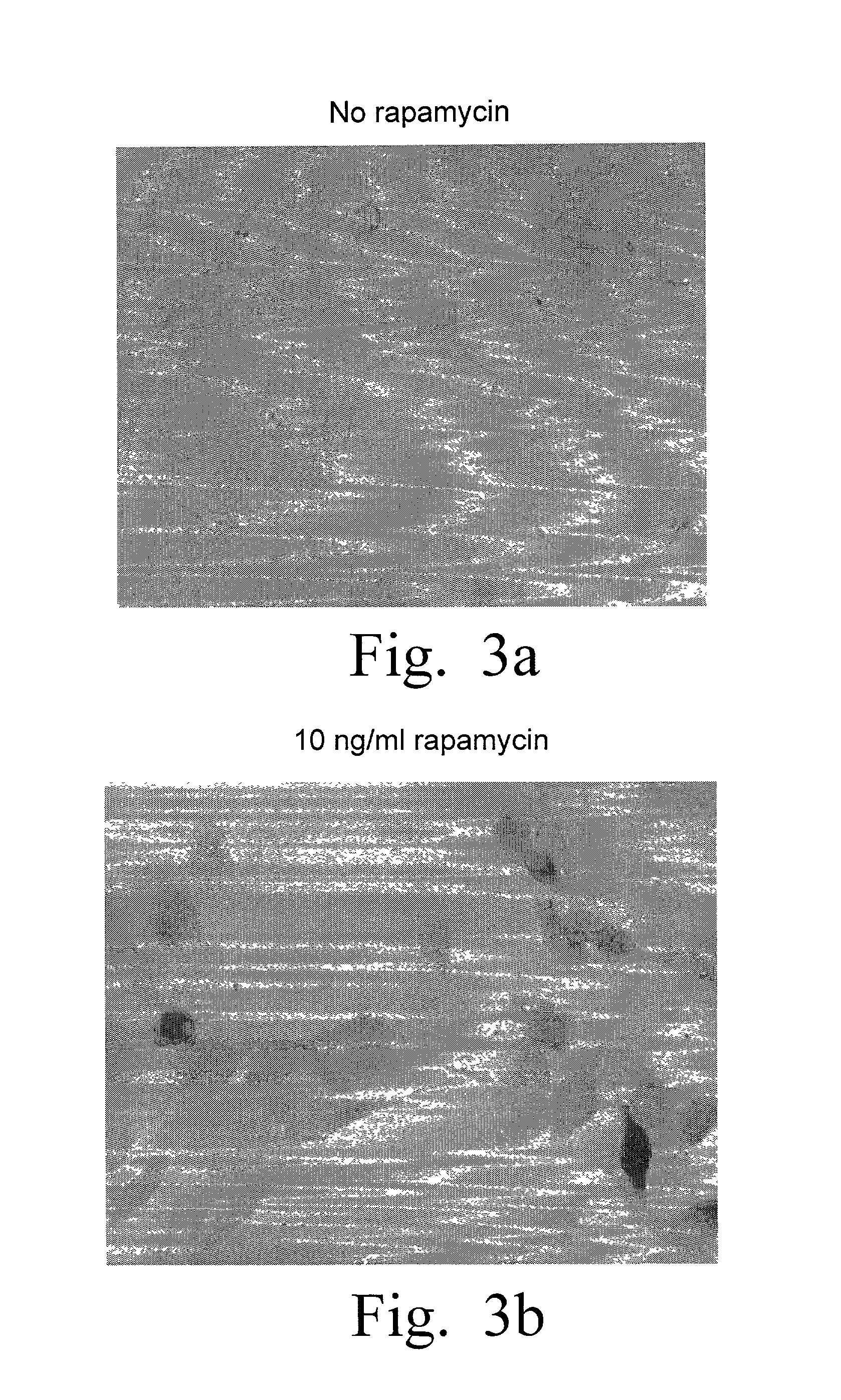Detection of molecular interactions by reporter subunit complementation
a reporter subunit and complementation technology, applied in the field of molecular biology, can solve the problems of inapplicability to single-cell analysis, inability to detect signal amplification, and limited system
- Summary
- Abstract
- Description
- Claims
- Application Information
AI Technical Summary
Benefits of technology
Problems solved by technology
Method used
Image
Examples
example 1
Preparation and Transfection of Retroviral Construct Encoding a β-Galactosidase Reporter System
[0138]A reporter system using β-galactosidase (“β-gal”) complementation to evaluate protein-protein interactions was constructed. A well-characterized protein complex developed by Schreiber was used as a test system to provide the protein binding moieties. Belshaw, P. J. et al., Proc. Natl. Acad Sci. USA, 93: 4604–4607 (1996); Brown et al., Nature 369: 756–758 (1994); Chen, et al., Proc. Natl. Acad. Sci., USA, 92:4947–4951 (1995); and Choi, J. et al., Science, 273:239–242 (1996), the disclosures of which are incorporated herein. In this protein complex, the intracellular rapamycin binding protein, FK506-binding protein-12 (FKBP12), interacts with intracellular FKBP-rapamycin associated protein (FRAP) only when rapamycin is present in the culture medium, an interaction that increases with the dose of rapamycin. Rapamycin is a small, cell-permeable molecule that binds to the two intracellula...
example 2
Assays of Binding and Activity of the β-Galactosidase Reporter System
[0147]Following the addition of rapamycin to the media, the transfected cells obtained as described in Example 1 were assayed for β-gal activity. As shown in FIG. 3, C2C12 cells expressing both FKBP12-Δω and FRAP-Δα were tested by exposure to 10 ng / ml rapamycin (FIG. 3b) for 12 hr or to no drug at all (FIG. 3a). Only those cells expressing both constructs exhibited β-gal activity, readily visualized by X-gal staining of fixed cells (FIG. 3b). It is advantageous that cytoplasmic staining is detectable with this method, in contrast to prior methods such as the yeast two-hybrid system, which report only nuclear interactions. X-gal staining was conducted as follows: Cells were fixed 5 minutes in PBS plus 4% paraformaldehyde and rinsed in PBS prior to staining. Indigogenic X-gal staining was performed overnight at 37° C. in PBS plus 1 mg / mL X-gal, 1 mM MgCl2, 5 mM K3Fe(CN)6, 5 mM K4Fe(CN)6.
[0148]The kinetics of activati...
example 3
Tripartite Fusions for the Quantitation of Protein-protein Interactions
[0152]To permit protein interactions to be studied in a quantitative manner in the system described in the above Examples and to control for effects on either the binding ability of the binding moiety or the complementing ability of the reporter subunits resulting from both activities being present in a single fusion protein, additional modifications were made to monitor the expression of the components of the system. In the above described system, the β-gal fusion proteins will be expressed from the same viral promoter, however, for some proteins, it is possible that their expression level will be influenced by the specific fusion partner. In particular, some proteins or domains could affect the stability or conformation of the β-gal domain. As a result, differences in the ability of the test proteins (the putative binding moieties) to complement one another could be observed that are not based on a physiologica...
PUM
| Property | Measurement | Unit |
|---|---|---|
| dissociation constants | aaaaa | aaaaa |
| dissociation constants | aaaaa | aaaaa |
| dissociation constants | aaaaa | aaaaa |
Abstract
Description
Claims
Application Information
 Login to View More
Login to View More - R&D
- Intellectual Property
- Life Sciences
- Materials
- Tech Scout
- Unparalleled Data Quality
- Higher Quality Content
- 60% Fewer Hallucinations
Browse by: Latest US Patents, China's latest patents, Technical Efficacy Thesaurus, Application Domain, Technology Topic, Popular Technical Reports.
© 2025 PatSnap. All rights reserved.Legal|Privacy policy|Modern Slavery Act Transparency Statement|Sitemap|About US| Contact US: help@patsnap.com



